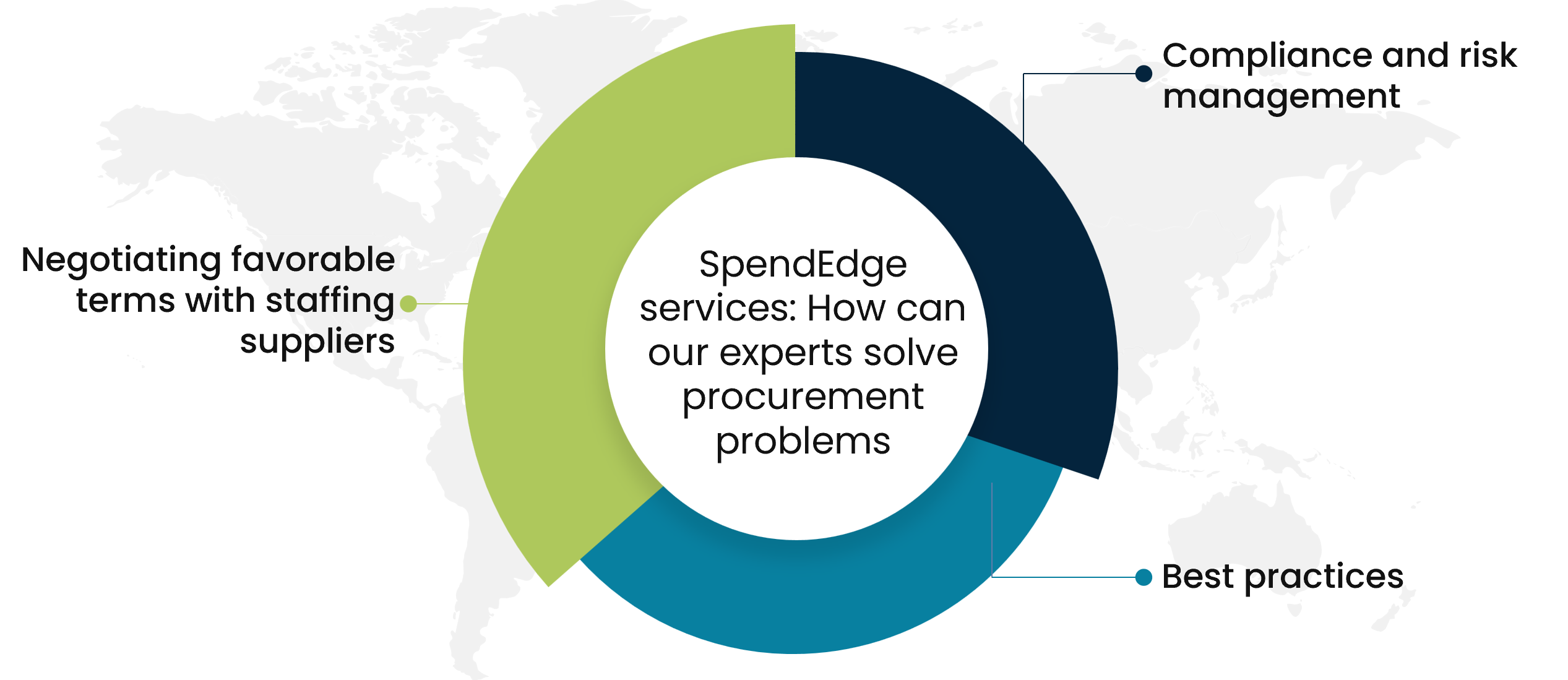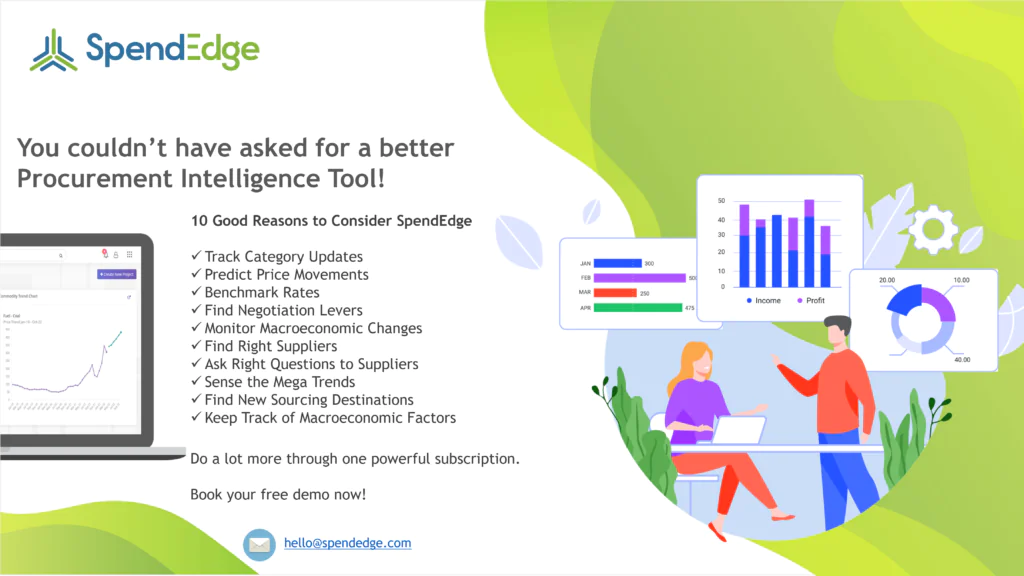By: George Mathew
Labor refers to the human effort involved in the production of goods or services. In procurement, labor plays a crucial role as it encompasses the activities related to sourcing, negotiating, and managing contracts with suppliers. Efficient labor management ensures cost-effective procurement processes and contributes to overall organizational success. By implementing a contingent workforce management strategy or a managed services provider (MSP) program, and utilizing a vendor management system (VMS), you can streamline your non-employee workforce management and gain better visibility into the process. This approach can lead to significant cost savings in your indirect procurement, access to top industry talent, a better understanding of which vendors best meet your needs and much more.
The role of a procurement team is to drive value to a business through various cost-saving strategies such as pricing, contractual arrangements, vendor performance, supplier rationalization, and other business terms. On the other hand, HR departments focus on managing a company’s workforce, including talent acquisition, talent management, retention, employee relations, payroll, benefits, and training. While procurement teams concentrate on executing business terms, supplier management, cost optimizations, and internal client satisfaction, HR teams work towards ensuring the happiness and well-being of employees during their tenure at the company.
What are the benefits that a contingent supply chain workforce provides to organizations?
Helps reduce your overall labor costs:
Engaging a contingent supply chain workforce can be advantageous in reducing overall labor costs. By collaborating with a supply chain workforce provider, you are relieved from the responsibility of providing benefits, managing payroll taxes, and overseeing their workers. Furthermore, you only incur expenses for the actual hours worked, eliminating concerns about overtime or vacation pay. This arrangement allows for greater flexibility in scaling your workforce based on demand fluctuations, optimizing cost efficiency. By leveraging a contingent supply chain workforce, organizations can streamline their labor expenses while maintaining productivity levels, ultimately contributing to improved financial performance and operational agility.
Ensures standard quality:
Incorporating skilled supply chain workers on a project basis ensures that your high standards are met. Moreover, by utilizing a contingent workforce, you gain access to a pool of pre-screened, highly skilled workers and site leadership who are readily available to make an immediate impact on your operations. This approach allows you to swiftly assemble a competent team tailored to your specific project requirements, enhancing efficiency and productivity. With a contingent workforce, you can confidently rely on their expertise and experience to deliver optimal results, while also benefiting from the flexibility to adjust the workforce size as needed.
A contingent workforce gives you the flexibility:
By employing a contingent workforce, you gain the flexibility to swiftly adapt to fluctuations in demand. For instance, when faced with a sudden increase in production requirements, your provider can promptly supply additional workers to meet the surge in demand. Conversely, during periods of reduced production, you can easily scale down the workforce without the concerns of layoffs or severance packages. This agility allows your organization to efficiently align labor resources with changing business needs, optimizing operational efficiency and cost-effectiveness. The ability to quickly adjust the workforce size ensures a nimble response to market dynamics, enhancing overall business resilience.
Improved compliance:
By collaborating with a supply chain workforce partner to provide and manage the contingent workforce, you transfer the responsibility of training and ensuring compliance with safety regulations to the provider. This relieves your HR department from this burden, enabling them to allocate their time and resources to other essential tasks. The workforce partner takes charge of vetting and equipping the workers with the necessary skills and knowledge, ensuring they meet all safety requirements. This arrangement not only streamlines your operations but also enhances workplace safety by entrusting these critical aspects to a specialized provider, allowing your organization to maintain focus on core business objectives.
SpendEdge Services: How our expertise can help organizations in implementing contingent supply chain workforce

Compliance and risk management – Ensuring compliance with labor laws and other regulations
Our experts at SpendEdge offer a comprehensive service in compliance and risk management, focusing on ensuring adherence to labor laws and other regulations. Our expertise lies in providing valuable advice and guidance on compliance issues, ensuring that organizations operate within legal and regulatory frameworks. By leveraging our knowledge and experience, we assist in identifying potential risks, implementing effective risk mitigation strategies, and promoting a culture of compliance. This service helps organizations navigate complex compliance landscapes, minimize legal and regulatory risks, and maintain ethical business practices.
Negotiating favorable terms with staffing suppliers:
Our SpendEdge experts can help you negotiate favorable terms with staffing suppliers, including rates and payment terms. We can also help you identify cost-saving opportunities. Engaging in our negotiation advisory services can save you time and resources, which can be used to focus on core responsibilities. We help you identify opportunities such as cost savings, favorable contract terms, or added incentives to maximize the company’s value. This increases clients’ confidence and bargaining power as well as maximizes the value derived from negotiations. Our Negotiation advisory services offer long-term cost savings by identifying ways to reduce expenses, improve terms, and secure favorable deals.
Best practices – Providing advice on workforce planning
We aim to help you understand the most widely recognized and accepted set of procedures that serve as benchmarks and aid in improving the efficiency and results of sourcing and procurement activities. Our team of expert market analysts provides organizations with advice on workforce planning, insights into industry best practices, and emerging trends in contingent workforce management. Ensuring adherence to best practices will aid businesses in portraying themselves as a reliable, trustworthy, and competent firm.
The success story of SpendEdge helping an organization strengthen its labor landscape
Our client, a Netherlands-based BFSI company with a global presence and operations worldwide, faced challenges in efficiently sourcing and managing contingent labor, which led to increased costs and potential compliance risks.
Our specialist advisors at SpendEdge conducted a thorough analysis of the client’s workforce requirements and market trends to develop a tailored sourcing strategy. Leveraged industry expertise to identify potential suppliers, considering their track record, capabilities, and alignment with the client’s values and goals. Our experts evaluated potential suppliers based on criteria such as experience in the financial sector, compliance track record, technology capabilities, and scalability. Utilized negotiation expertise to secure favorable terms, including competitive rates, flexible contracts, and performance-based incentives. Furthermore, implemented a robust compliance and risk management framework to monitor and mitigate potential risks associated with contingent labor.

Contact us now to solve your procurement problems!
Author’s Details
George Mathew
Associate Vice President, Sourcing and Procurement Intelligence
George is a procurement specialist at Infiniti Research and provides advisory services to clients across the pharmaceutical, CPG & FMCG, energy, and automotive sectors. He specializes in the procurement areas of industry benchmarking, cost modeling, rate card benchmarking, negotiation advisory, and supplier intelligence.




